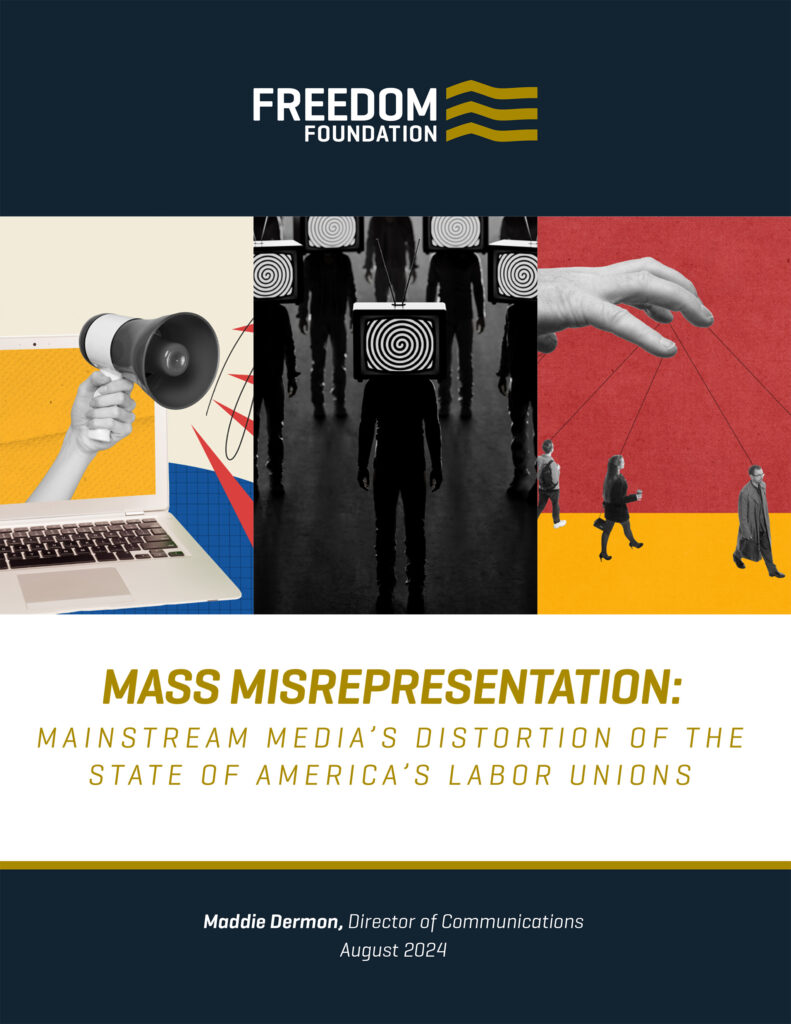Introduction
Though memories of historic strikes that liberated children from the grueling conditions of Industrial Revolution-era steel mills and coal mines have yet to fade from the American psyche, modern labor unions in the United States bear little resemblance to their forerunners.
Troublingly, corruption and polarizing ideological activism have commandeered Big Labor’s priorities, bringing union membership to just 10 percent of the American workforce – the lowest in United States history.
Nonetheless, Big Labor’s insistence that it enjoys “record public support” and “unprecedented activism” as proof that the “state of the unions is strong” has been embraced by the mainstream media, whose bias towards organized labor has, no doubt, led many Americans to assume the ambitions of today’s unions are just as noble as those of days past.
To expose the false narrative built by Big Labor and the mainstream media, “Mass Misrepresentation” discusses:
“Big Labor’s Biggest Cheerleader”
Following a decades-long decline of labor reporting, unions have returned to the regular spotlight in several major publications to back Big Labor’s claim that organized labor makes “things better for everyone.”
Beyond recent labor reporting centering hot button events such as organization efforts at Starbucks and Amazon amid 2023’s “hot labor summer,” union coverage falls into several habitual categories:
- Insistence that Big Labor is making a comeback.
- The benefit of organized labor to workers, plus American society at large.
- Discrediting labor policy reform meant to ensure union accountability.
“The State of Private Sector Unionization” and “The State of Public Sector Unionization”
The reality of union membership in the public and private sectors, however, fails to live up to the media’s biased narrative. Union membership, which offers few practical benefits to American workers, continues to hit record lows.
In the private sector, union membership, which often entails higher costs and substandard raises, arguably hinders employees in the workplace. Plus, widespread corruption among union officials and misuse of membership dues for political activism provide additional incentive to avoid membership. Today, just six percent of workers in the private sector participate in union membership.
Likewise in the public sector, corruption, political spending, and mediocre representation run rampant. And as union negotiators make unreasonable demands, all Americans suffer from increased taxes and less efficient government. Thanks in part to the Freedom Foundation’s national outreach to public employees, government unions have lost more than 700,000 members since the Supreme Court’s decision in Janus v. AFSCME outlawed mandatory dues payments in 2018.
“Mainstream Media Misses the Mark”
Though the media insists that “unions are the strongest in decades,” membership continues to plummet. Amid claims of organized labor’s resonant benefit to American life, rising costs in exchange for mediocre representation suggests otherwise. And though reporters claim that union accountability attempts “attack” workers’ rights, legislation to this effect is supported by 87 percent of Americans.
Big Labor and its friends in mainstream media owe it to all Americans, especially within the working class, to come to terms with the reality of the state of our unions. And without a change of heart, it’s unlikely that Big Labor’s aspirational renaissance will come to fruition anytime soon.











